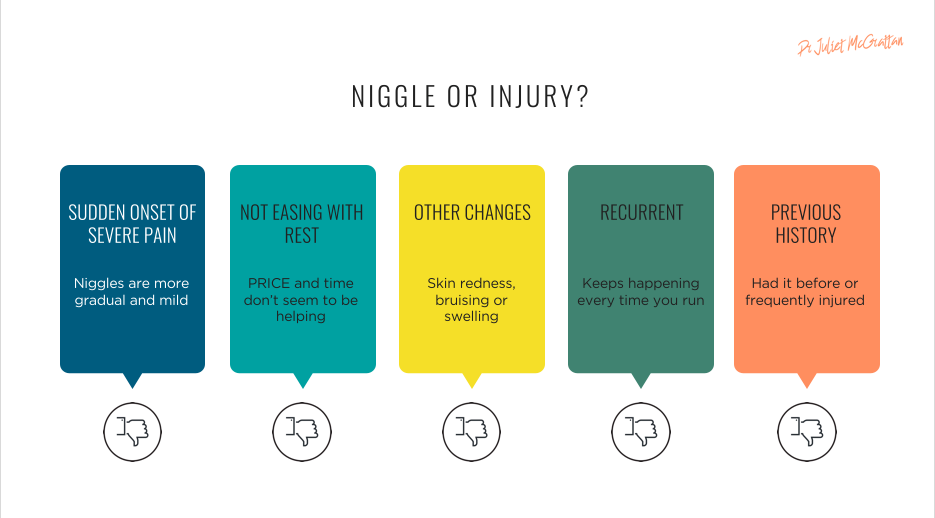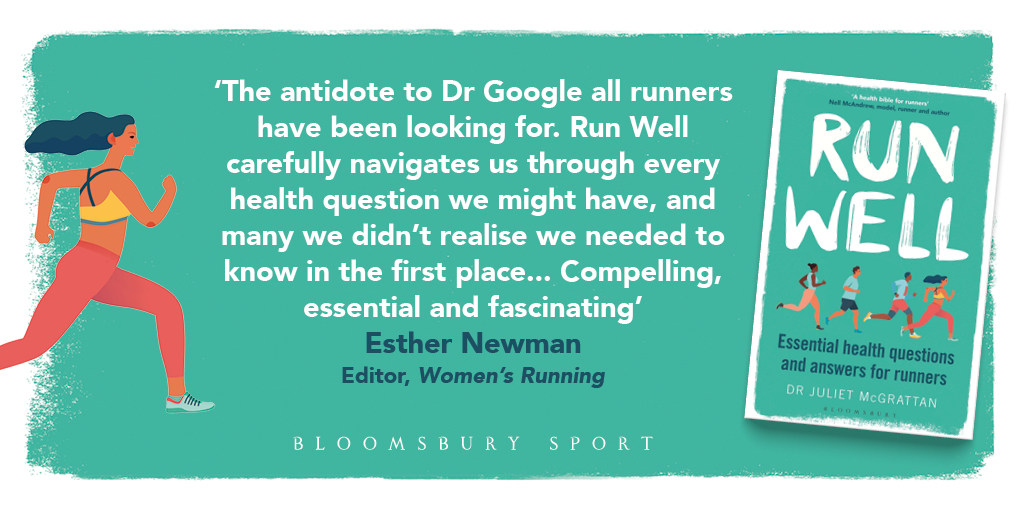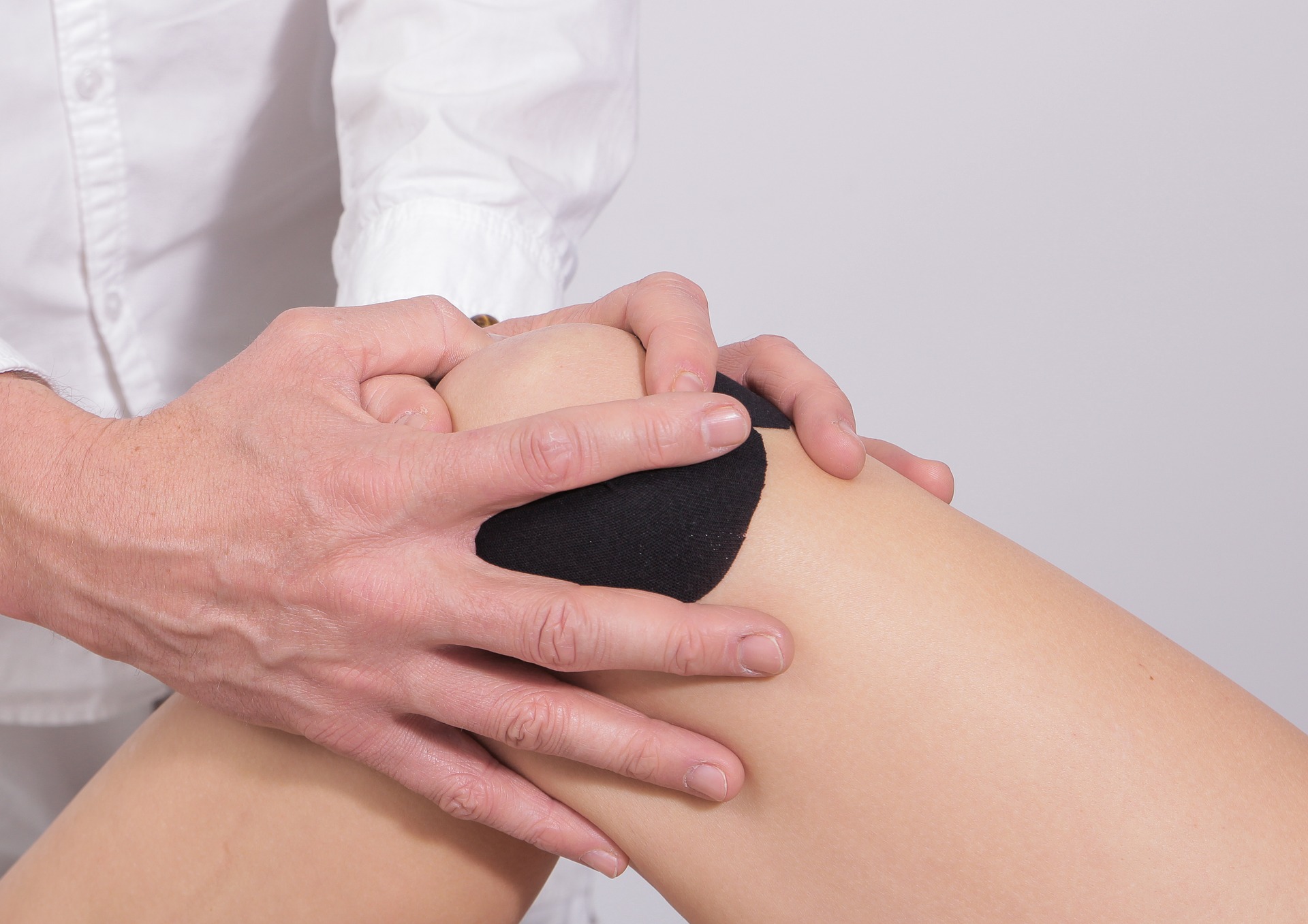You feel a twinge in your knee when you’re running. Do you keep going? Do you stop? Thoughts of a running career-ending injury flash through your mind. Then you tell yourself to stop being silly, it’s only a twinge or a sore muscle… but what if it isn’t and ignoring it is going to make it worse and stop you running for longer? This is a common internal dialogue that goes on in your brain when you just want to enjoy your run but something is hurting.
Telling the difference between a running injury and a running niggle can be difficult. Their consequences, outcomes and treatment can be very different. Niggles can often be ignored or steps taken to stop them progressing into injuries where as injuries need to be respected and managed well from the outset to get the quickest and most successful return to running.
What do I mean by a niggle? I’m talking about an ache or pain that’s an expected consequence of running. All runners get niggles from time to time, especially when you’re increasing distance, frequency or intensity of running. Pains which come on during or after running that aren’t severe, aren’t due to any significant underlying problem and aren’t going to stop you entering your next race are niggles in my eyes.
Here are five red flags that can suggest that you have an injury rather than a niggle:
1. Sudden onset of severe pain. If you’re running along and you suddenly feel something twang, rip or shoot pain, it’s more likely to be an injury. Niggles tend to be milder and more gradual in onset.
2. Not easing with rest. Niggles usually resolve with a bit of time, pain doesn’t hang around for long but if your discomfort isn’t getting better after 24 hours or after using PRICE (Protect, Rest, Ice, Compression, Elevation) then it’s a warning of significant injury.
3. Other changes. If you have associated changes such as heat and redness of the skin, swelling in the tissues or bruising then you’re definitely looking at more than a niggle.
4. Recurrent. Warning bells should ring if you’re getting the same pain every time you run, either from the start of running or coming on at the same point in every run. Issues that just don’t go away need to be looked at. Niggles can start like this but if ignored they can progress into injuries.
5. Previous history. Your own experience and history is really important. If you’ve had a previous injury then there’s a higher chance of recurrence. Similarly, if you’re someone who is often injured then it’s worth taking action sooner rather than later and treating injuries early and fully.

This doesn’t mean you should ignore niggles. Listening to your body is important. But if the niggle progresses into any of the five red flags, for example, it’s happening every time you run, then you need to take action. Rest should always be your first step and then seeking a diagnosis from a qualified health care professional, rather than an online running forum or Dr Google. Getting the correct diagnosis will lead to the right treatment and advice and the best chance of getting back to running as soon as possible. At the end of the day, as runners, that’s what we all want!
There’s lots of advice for runners of every level in my book Run Well: Essential health questions and answers for runners. Published by Bloomsbury and available to buy now.

Featured image: whitesession at Pixabay







3 Comments